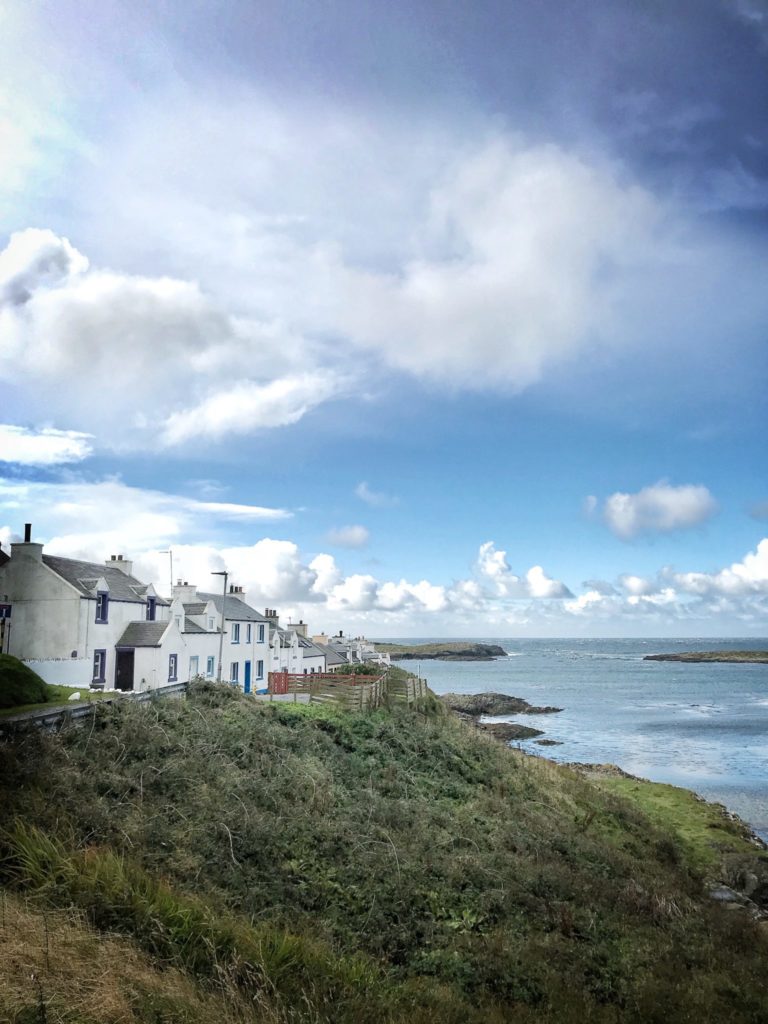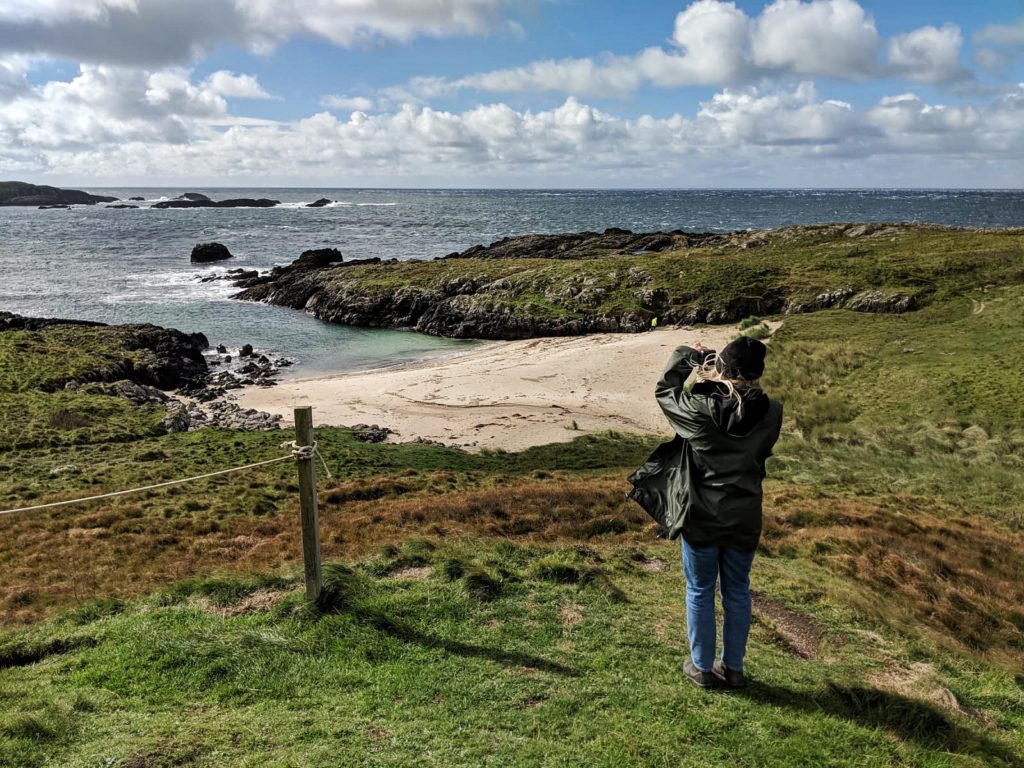
“This is ribwort plantain. It’s not plantain the vegetable, but a plant whose young leaves are edible. It’s got really powerful anti-inflammatory and antibacterial properties and is brilliant for insect bites or nettle stings,” says James Donaldson as he wraps a leaf around his finger and demonstrates how neatly the sturdy stem can be tucked underneath to fasten it like a bandage. “And this is ground ivy. It’s part of the mint family but it tastes like lamb fat.” And sure enough, as I chew down on the succulent, frilly leaf, my mouth fills with an intense burst of decidedly savoury, almost meaty menthol, finishing off with a satisfying bitter edge. It tastes like roast lamb and mint sauce all at once: it’s a revelation.

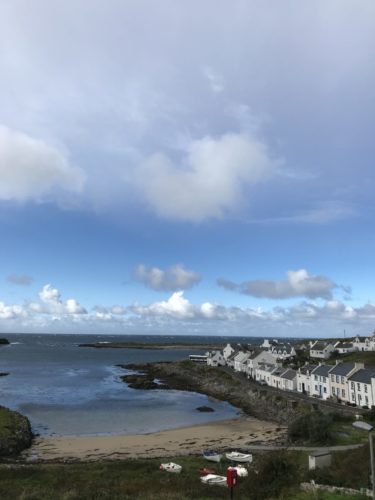
I’m standing in a woodland clearing on Islay, the rugged, southernmost island of the Inner Hebrides, in the shadow of an old stone folly-cum-defence tower once used for launching canons at pirates, eating things James keeps plucking from the ground. It may sound like a trippy situation, but I’m not worried. James has the enviable job as full time forager for The Botanist Gin, Islay’s first and only dry gin, and he’s tasked with picking and conserving the 22 wild botanicals that give the gin its distinctive herbal flavour.
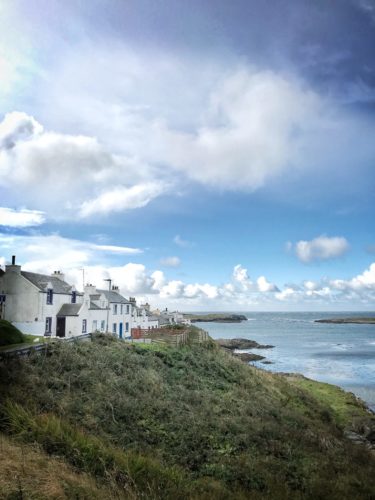
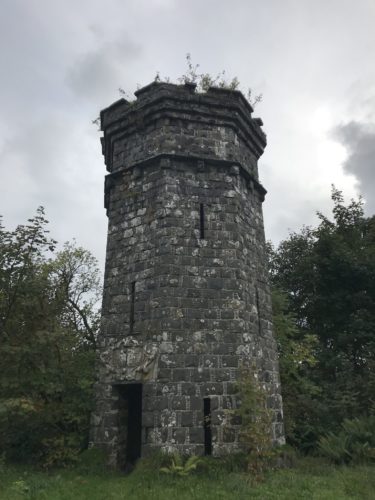
You’ll know by now how much I love a forage (in another life, I am an aspiring botanist – learning the Latin names of everything and living off the land), and it’s no secret that I adore gin, so of course I jumped at the chance to work with these guys on a trip up there to learn more. I’ve longed to explore the Hebridean archipelago ever since friends of mine visited Jura and came back raving about the wild landscape, friendly people, cosy pubs and superb single malt, and whisky distilleries bring plenty of tourism to the islands, but gin production here is relatively new. The Botanist is part of the Bruichladdich distillery – famous for its heavily peated Octomore single malt – and increasingly now too its dry gin, which has been made here since 2010.
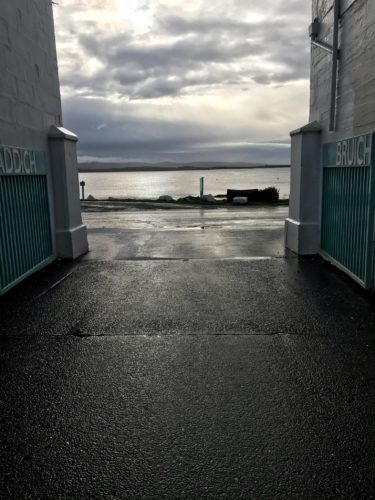
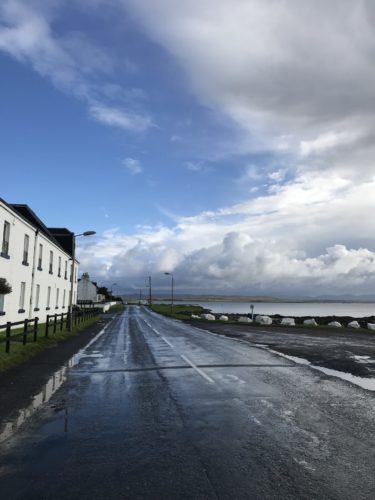
So far James has shown us wild botanicals including lime green, ripely tropical scented pineapple weed, frothy-flowered meadowsweet (a favourite of mine you can read more about here), bright yellow tansy, chamomile, yarrow and apple mint, but as well as the surrounding wild flora, he’s also shown us his small cuttings collection. Among them, sporting tiny frosted purple berries, is Islay Juniper: a rare native juniper that has become almost extinct on the island. “At the moment we use a symbolic amount in each distillation because it’s so scarce and the berries take three years to mature, but my hope is to plant these and make it plentiful again.”
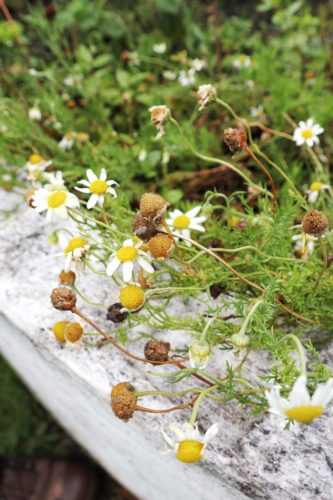
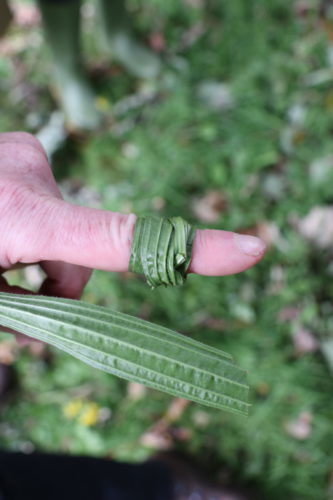
One eye on sustainability
Conservation is a key part of James’ role, and something he is passionate about sustaining, not just to ensure the gin’s lifespan, but to protect the Island’s unique environment for generations to come. As such, he’s helped set up the Botanist Foundation with the distillery, a scheme supporting research into naturally-occurring plants and flowers and how to protect their habitat on the island, laying on foraging walks for the local community to share his wealth of knowledge.
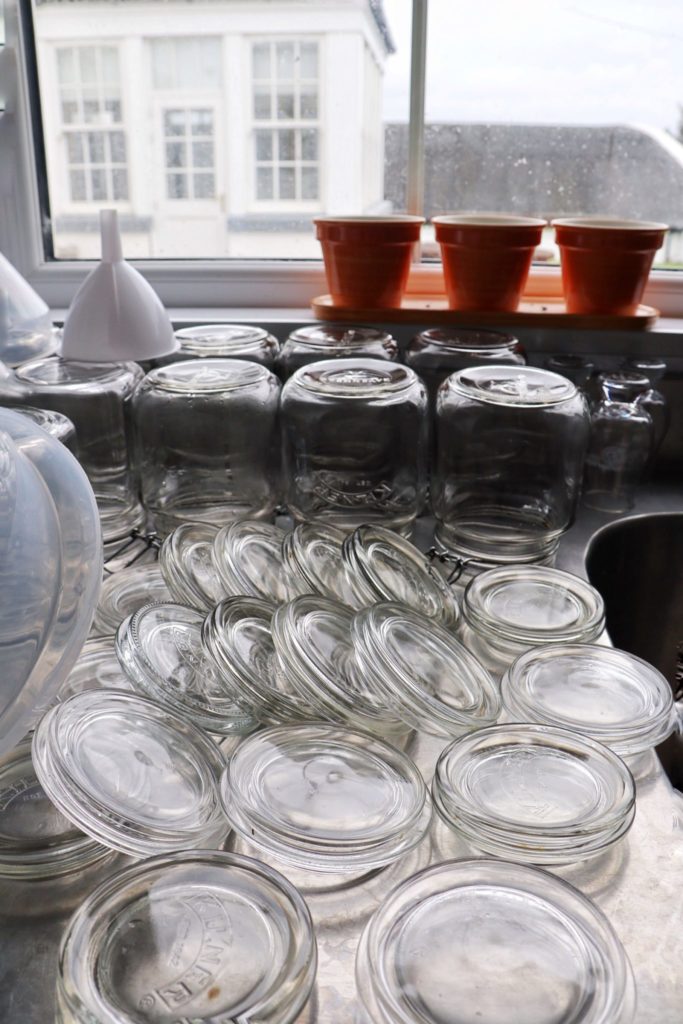
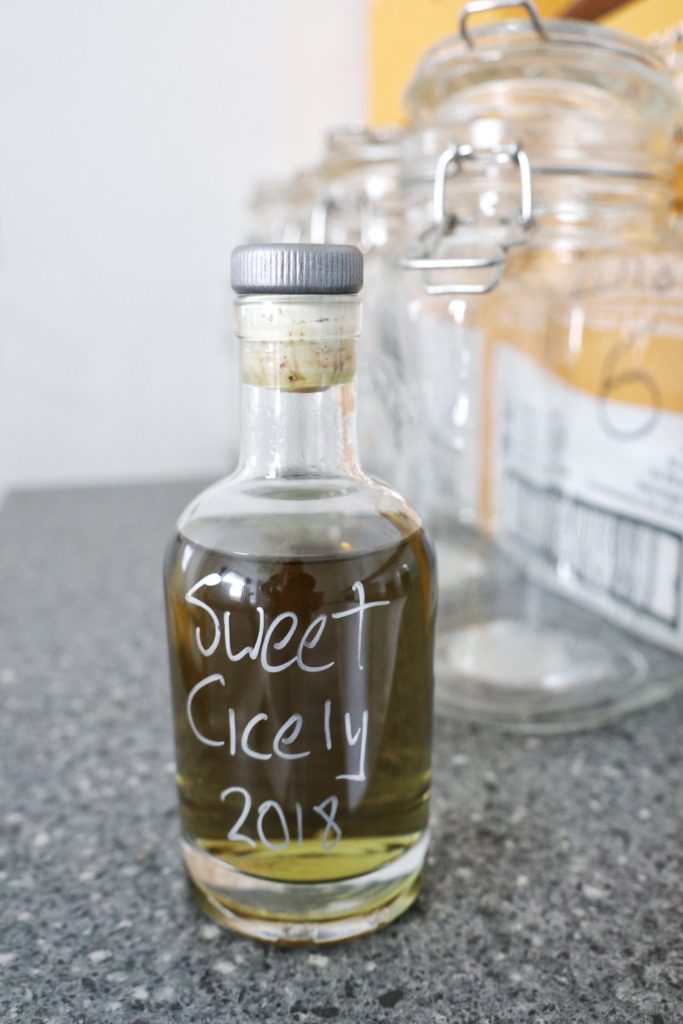
Back at his kitchen, which he jokingly refers to as the ‘foraging lab’, Kilner jars and glass bottles containing varyingly tinted liquids baring labels like “Sweet Ciciley” are stacked on every available surface. It’s coming to the end of foraging season for James, and the freshly-picked seasonal botanicals used in the gin recipe need to be preserved in large enough quantities to guarantee a supply for a year’s worth of distillation, which is done by drying and infusing into tinctures.
This might sound like a daunting task, but the gin is still made seasonally, in relatively small quantities, with just ten distillations a year done, each one yielding 250,000 bottles of gin, and requiring just a bag of the Islay botanicals, as well as large quantities of the nine bought-in base botanicals: more conventional flavourings like coriander, juniper, orange peel and cassia.
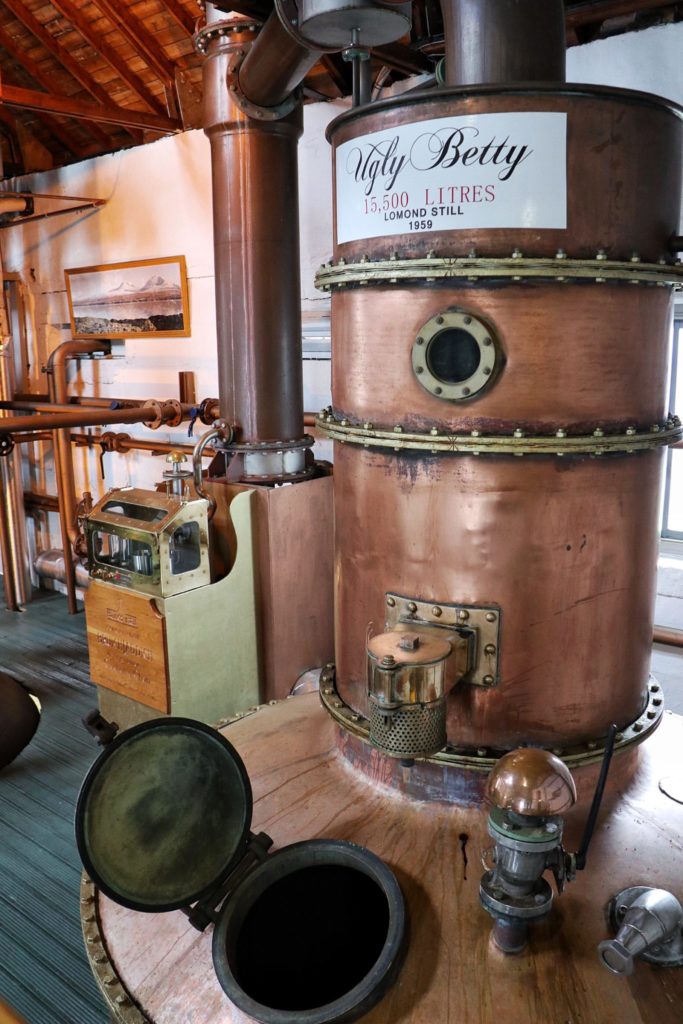
While the base botanicals are macerated for 12 hours in the pure grain spirit before distillation, the dried foraged ingredients are mixed together in a sort of giant tea bag, and the tinctures are poured over them just before distillation. The botanical bag is then placed in a special chamber which has been custom-added to the neck of the copper still ‘Ugly Betty’, so that its flavours infuse into the spirit vapour during distillation. Dating back to 1959, Ugly Betty is a rare still that was swapped by the distillery for barrels of its whisky, and led to the eventual explorations into gin distilling.
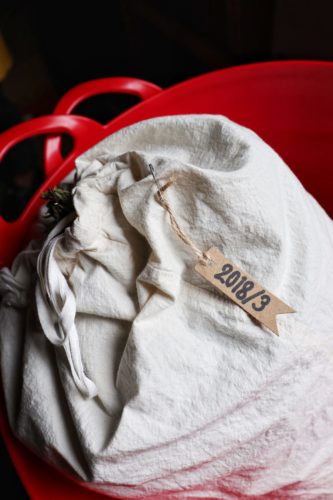
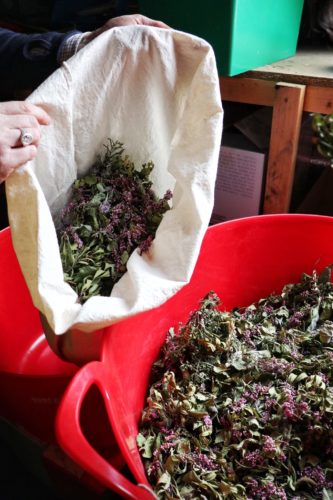
“We make tinctures out of the florals because they lose their pungency if you dry them,” James explains as he shows us how he uses coffee filters to filter the infusions. “It’s really high tech!” he laughs. Up in the rafters above the distillery’s offices, he shows us around the attic where dries the rest of the foraged ingredients. There are shelves of drying bog myrtle (much more beautiful than it sounds), baskets of bright purple flowering dried heather and boxes of stems sporting tiny little flowers called “our lady’s bed straw’. It’s all charmingly archaic, as are the dog-eared reference books and maps of Islay that lie around the place.
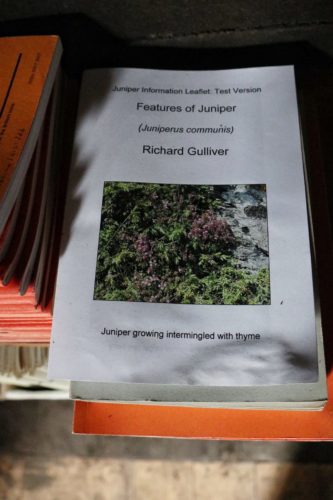
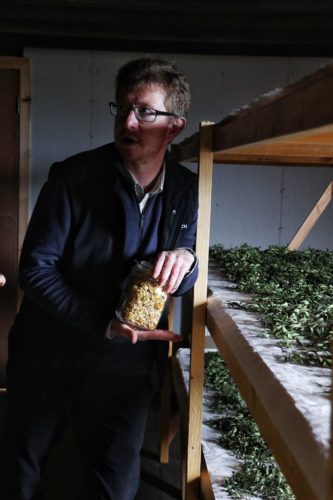

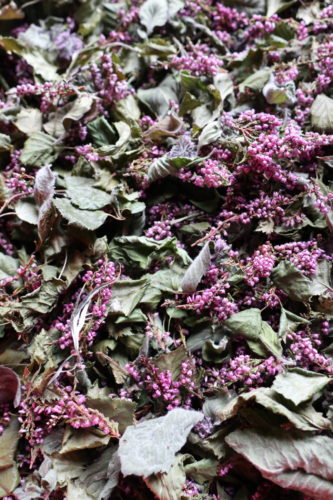
“This smells so sweet,” says James, picking up a handful of our lady’s bed straw. “It was used for stuffing mattresses in the old days. I have to pick tens of kilos of this as it takes so long to dry. It’s the same with heather, I’ll come back with massive buckets of it but that will dry down to as little as 200g.” It’s back breaking, time-consuming work, but James tells us it’s his “dream job”. Having studied botany and worked as a guide with different distilleries on the island, he was quick to apply when he saw the post advertised, and was trained up by Dr Richard and Mavis Gulliver, a local couple and the original botanists from whom the gin takes its name.
They were originally recruited by Bruichladdich’s legendary master distiller Jim McEwan, who – when the distillery decided to diversify into gin production to aid cashflow – tasked them with finding the original recipe using wild island botanicals. The pair came back to him with the 38 foraged Islay botanicals they’d gathered, they all then narrowed those down to 22, eliminating the ones that weren’t as sustainable or flavours that would overpower the spirit. When the time came for the Gullivers to retire a year and a half ago, James stepped in. He’s been relishing his role ever since. “When I first took the job I was the most-hated man on Islay,” he jokes, “because there were so many people that wanted it. But I learned with the Gullivers, and did a season of picking with them to learn. Mavis in particular was passionate about making sure we were using naturally-occurring, plentiful weeds and plants.”
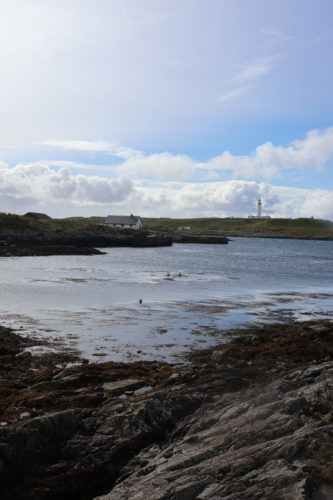
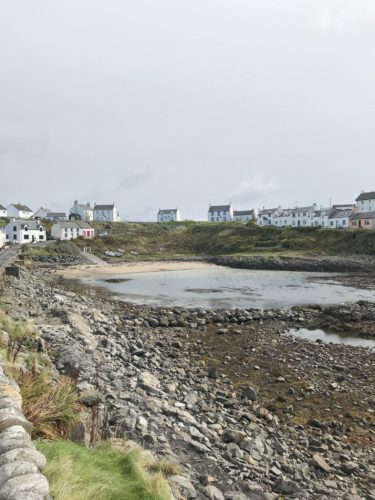
Terroir-driven drinks
This obsession with the uber-local extends beyond just the gin at Bruichladdich, which only uses Islay barley for its whiskies, working with 19 farms to supply what they need. It also teams up with foraging-focused chef Craig Grozier of Fallachan Dining to host meals and events based around wild food and drink, one of which we have the pleasure of experiencing during our visit. In a beautiful dining room overlooking Loch Indaal, the chef serves us a feast of mostly-foraged fare, from a stunning first course of peated, smoked sourdough with cultured creme fraiche butter and ash salt he made himself from the loch, to aged halibut with foraged girolles, homemade halibut bottarga (cured roe) and an elderflower vinegar/smoked rapeseed oil emulsion. Wild hare from a nearby estate is matched to crispy kale, “because hares love to eat green things” and a moussy custard was made from dried, foraged mushrooms which tasted of cocoa.
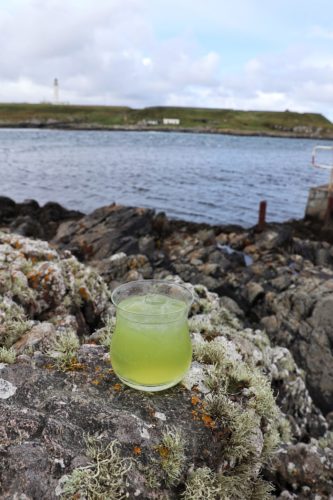
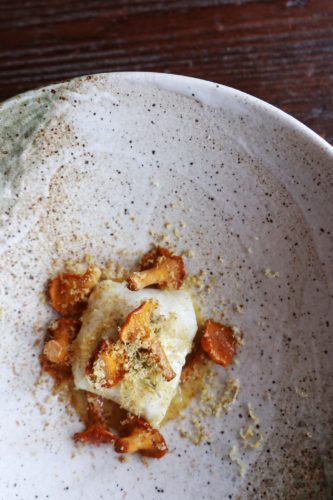
While no gin is consumed at the lunch (we drink a beautiful natural Muscadet), we’re later shown down to the rocks at Portnahaven – the most westerly point in Scotland, and treated to one of brand ambassador and mixologist Abigail Clephane’s foraged cocktails – a bright green, super fresh mixed drink made with sorrel and spruce shoot juice and Botanist Gin. It tastes of forests and sea spray, and drinking this over ice, watching the bobbing heads of seals swimming in some of the strongest currents in Europe, as clouds send a shimmering, ethereal grey light across the water, I vow to return to Islay. But until then, I can relive our adventure every time I take a wee dram of The Botanist gin.
If you like the sound of all this foraging malarkey and would like to experience a foraged dinner exactly like the one I ate, matched to foraged gin cocktails, you’re in luck. As part of London Cocktail week, The Botanist is putting on an amazing pop-up called ‘The Forager’s Table’ from 3rd-5th October, with food by chef Craig Grozier and cocktails by Abigail Clephane, and I’m running a competition to win two seats at the table on my Instagram – just check out my post about this blog and comment accordingly. If you’d rather not leave it to luck, tickets are available here: https://www.designmynight.com/london/whats-on/supper-clubs/bethebotanist-the-foragers-table?t=ticket
